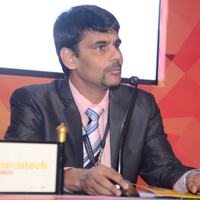For most companies bringing all or some employees back to offices is a necessity. And for this to happen, they should know the safety concerns and have the technology to deal with them.
Work from home may have turned out to be a feasible model for many companies worldwide, but there are still some things that you cannot do from home. For instance, factories, stores, government offices, and hospitals need staff to work from the office. And even in the case of sectors where remote working is possible, India’s inadequate power and network infrastructure pose a challenge.
So, for most companies bringing all or some employees back to offices is a necessity, and for this to happen, they should know the safety concerns and have the technology to deal with them.
Major concerns to know
 Pawan Desai
Pawan Desai
CEO
Mitkat Advisory Services
Ever since the pandemic and the lockdown began, companies have been considering the use of devices like temperature scanners. But while the technology is available, a significant concern is the training of the security team for using the technology. For instance, there are various strict parameters that one needs to follow when using a fever detection camera to get accurate readings. There are also several solutions in the market now that knowing
which temperature monitoring device is the best is also difficult.
This is just the tip of the iceberg. According to Pawan Desai, CEO of Mitkat Advisory Services, the primary concerns are at four levels.
“One is about what to do at the organizational level in terms of structures and technologies,” Desai said. “Second is at the employee level, in terms of the precautions they need to take, especially disclosure on their whereabouts, travel history, wearing a mask, etc. The third is at a process level. Each state in India has come up with different processes that companies need to follow. Finally, fourth is at a monitoring level, where keeping track of employee movement without violation of privacy is paramount.”
Col. Vineet Sehgal, COO at IIRIS Consulting, along with his colleague and Chief Design Officer Kunal Bhogal, explained that other challenges include maintaining social distancing during login/logout, transportation, monitoring of employees, hygiene-awareness, etc.
What technology to use
 Col. Vineet Sehgal
Col. Vineet Sehgal
COO
IIRIS Consulting
Technological options are several, but their selection depends on an organization’s aims and work culture. When it comes to facility preparedness, early detection, and possibly prevention is the first line of defense.
“The next is using your existing infrastructure such as surveillance cameras for social distancing violations, or PPE detection or even behavioral alarms using video analytics apart from their regular duties as surveillance equipment,” said Sehgal and Bhogal. “You may even use cameras with special facial recognition that can detect people with masks and can record their temperature while they enter into the facility. Upon detecting any anomalies, the access control barriers can disallow individuals who can be intervened and isolated by the trained staff.”
A major challenge would be making sure that employees follow the guidelines in the longer term. The
use of analytics could turn out to be the solution to this. Tinku Acharya, Founder and MD of Videonetics Technology, explained that a lot of innovation is taking place in this segment.
“We were the first company in the world to offer analytic solutions that enable AI-based monitoring of social distancing, face-mask compliance, etc.,” Acharya said. “If someone is not wearing a mask, the solution would detect the environment to see if its allowed, or else identify the people who are violating the regulations.”
Toward a hygiene rating system
Vendors are also thinking beyond the use of these tools, to hygiene and sanitation becoming a new normal at workplaces. Acharya explained that his company is working on a solution that would leverage the power of AI to monitor the hygiene conditions in a place and provide a rating.
“The solution would give a ranking between one to 10, considering various parameters like security index, social distancing index, the number of violations per hour, etc.,” Acharya said. “Violations may include anything from handshaking to not wearing masks, not standing in line at a counter or overcrowding.”
Risk compliance, automation, and contactless technology
 Tinku Acharya
Tinku Acharya
Founder and MD
Videonetics Technology
Regardless of the solution and the technology that companies may decide to use, the need to ensure employees follow the regulations is critical. Sehgal and Bhogal said that it is perhaps the best time to get a facilities risk compliance tool that can provide you a glimpse of your risk exposure and can particularly highlight your vulnerable areas – such as compliance violations for periodic cleaning and deep cleaning, facility risk audits, etc.
“Speaking of facility cleaning and audits, the keyword here will be automation,” said Sehgal and Bhogal. “Technologies from the future are applicable now – drones, robots, and contactless technologies such as facial recognition and gesture control. Drones and robots can be deployed to be a part of an automated cleaning drive process.”
Facial recognition deserves special mention as this could replace the fingerprint solutions many Indian workplaces have been using for access control and time/attendance.
Impact on the future of the Indian security industry
The most obvious impact is that security solutions that companies adopt at this stage could continue to be used in the longer term. Even after the COVID-19 threat subsides, there may be an increased health awareness, and this could lead to solutions like analytics and thermal cameras still being used.
The market may also see an increase in demand for contactless technology, such as facial recognition-based access control systems. More integration could also be on the way as solution providers seek to bring safety and security into a unified system.